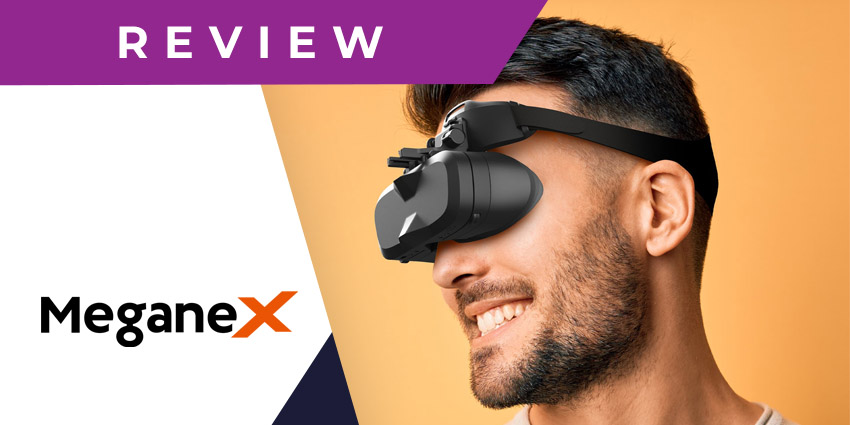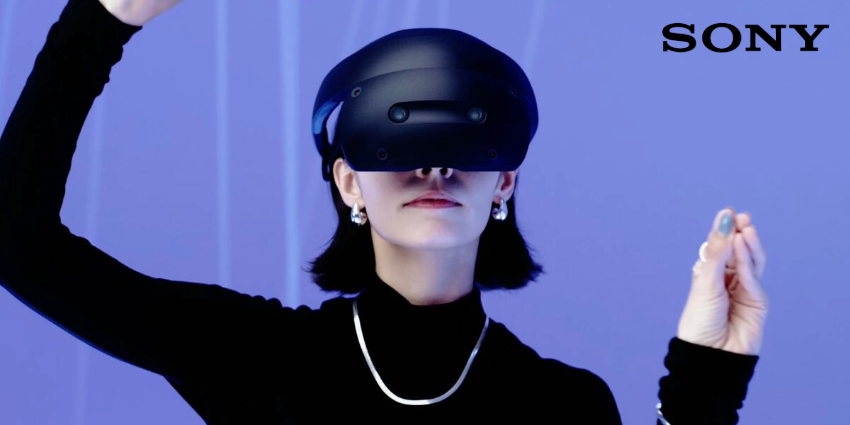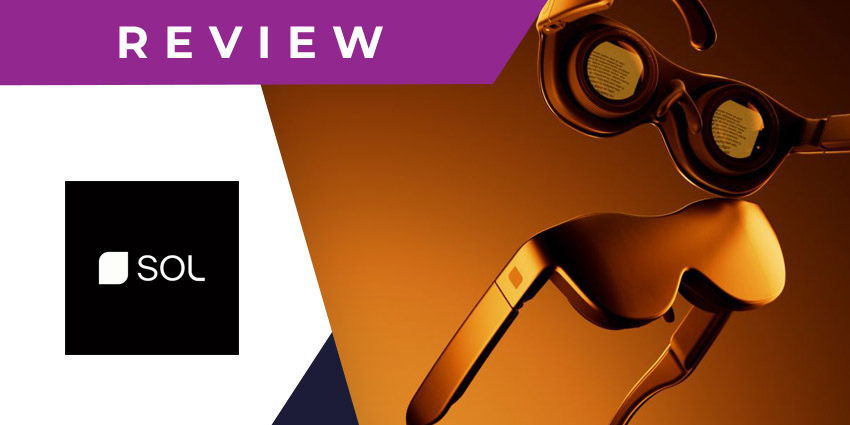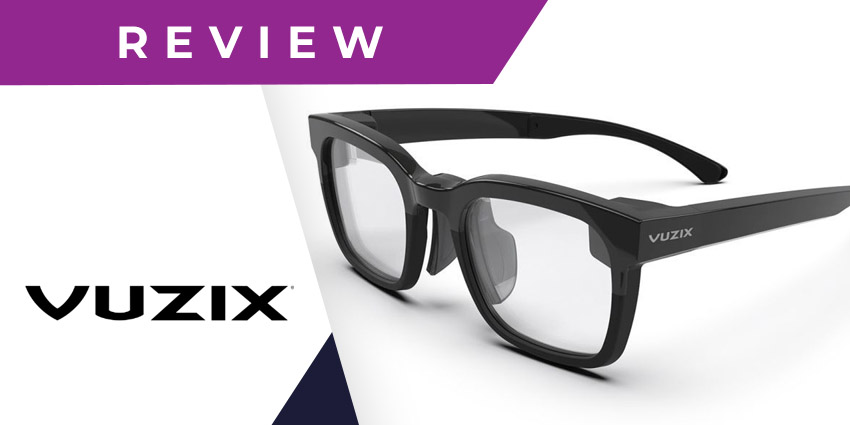Are you tired of bulky, uncomfortable XR headsets that you can’t wait to take off after an hour or two of use? The MeganeX Superlight 8K could be the ideal alternative. Similar to the revolutionary BigScreen Beyond VR headset, the MeganeX Superlight is a comfort-first solution.
The unique design strips away anything considered “unnecessary” by the developers to leave you with a super-compact device that might make you forget you’re wearing a headset at all.
Even better? The MeganeX Superlight doesn’t compromise visual clarity for comfort. With 4K Micro OLED screens for each eye, and state-of-the-art pancake lenses, it promises an exceptionally immersive experience. The question is, does this device live up to the hype?
We took a closer look at this impressive new headset, to help you decide if it’s the right virtual reality solution for your team.
Quick Verdict, Pros and Cons
If you don’t have time to read through this complete review – here’s what you need to know. The MeganeX Superlight is definitely one of the most comfortable, compact, and lightweight headsets on the market. Unfortunately, like it’s competitor, the BigScreen Beyond, it has some downsides.
First, it’s a pure virtual reality headset – there are no AR or MR capabilities here. Secondly, it’s a PCVR headset, which means you need to keep it connected to a (reasonably powerful) computer at all times. Plus, there are no built-in speakers here for audio, meaning you have to connect your own headphones to the system.
Pros:
- Exceptional 4K per eye resolution (8K total)
- Decent 90hz refresh rate
- Fantastic pancake lenses
- Extremely comfortable and lightweight
- Works with all kinds of apps and software
- Built-in microphones
Cons:
- Relies on a connected computer and SteamVR tracking station
- No integrated speakers
- No standalone VR experience
The MeganeX Superlight: Overview and Specs
The MeganeX Superlight 8K VR headset is the latest in a series of immersive innovations to be released by Shiftfall. The XR startup has actually experimented with a few other headsets (and accessories) in the past, such as its initial MeganeX headset, and a series of body tracking devices.
The MeganeX Superlight was announced in 2024 after Panasonic sold Shiftfall to a Tokyo-based parent (Creek & River). It basically builds on the benefits of the MeganeX, delivering a similar lightweight experience, with enhanced visual fidelity.
Compared to similar alternatives, like the BigScreen Beyond, the MeganeX Superlight it’s quite as “customizable”, nor is it as affordable. You can pre-order the headset now for $1,899, if you’re based in the US or Japan. Comparatively, the BigScreen Beyond would only cost you around $1K.
Still, the specs are impressive – particularly if you’re looking for an excellent combination of visual clarity and comfort.
Tech Specs
- 3,552 x 3840 per eye resolution
- 8bit and 10bit color depth, and 95% DCI-P3 coverage
- 90Hz refresh rate
- Pancake lenses (built by Panasonic)
- Electronically adjustable IPD of 58-72mm
- 6DoF tracking with SteamVR tracking
- PC DisplayPort and USB connectivity
- Optional add-on prescription lenses
- Built-in dual microphones with beamforming
- Two “wearing method” options
- Weight: 185g
MeganeX Superlight Review: The Design
Let’s start with the most obvious thing that makes the MeganeX Superlight stand out over competing headsets – the design. This is a truly tiny headset, just like the BigScreen Beyond VR.
The weight is a fraction of what you’d expect from something like the Apple Vision Pro. So if you’re looking for something sleek and simple that doesn’t weigh you down, the MeganeX Superlight is a great choice. Although the headset looks similar to the competing device from BigScreen Beyond, there are some major differences.
First, BigScreen Beyond focuses on creating highly “customized” headsets. They personalize each device they sell based on a digital scan of your face, giving you the perfect fit. MeganeX doesn’t offer this level of “customization”. However, you still get access to various light shield options, prescription lenses (if necessary), and an electronically adjustable IPD.
Although this means you might need to spend a little longer setting the MeganeX Superlight up, it also means you’ll have an easier time sharing your device with other users. That’s good news if you don’t want to have to invest in separate devices for everyone on your team.
Plus, the fact that you can actually adjust the headset after you receive it is helpful. You can’t really make any changes to an alternative like the BigScreen Beyond without returning it to the company. The MeganeX Superlight, on the other hand, gives you a convenient electronic solution for adjusting IPD with an integrated controller or PC app.
Plus, you can even adjust the positioning of your pancake lenses, forehead pad, and the distance between the lenses and your face. That all means you can easily tweak the design of the headset to suit your specific needs and preferences.
Comfort and Ergonomics
The comfort factor of the MeganeX Superlight 8K headset goes far beyond its lightweight, and highly adjustable design. Shiftfall have taken additional steps to make sure you feel cozy using your headset for hours at a time. The firm has created a “near-zero facial pressure” interface, that directs weight away from your face, and into the flexible head strap (worn around your forehead).
This means you’re less likely to end up with annoying lines and red marks over your cheeks and around your face after you’ve worn the headset for a while. The light shade is extremely comfortable too, with an ultra-soft design that sits gently against your face, effectively blocking out light without any unnecessary pressure.
One particularly interesting point to note about the MeganeX Superlight from a comfort perspective, is that it feels great on – no matter your position. If you tried to lay down while you were wearing something like the Apple Vision Pro or Meta Quest 3, you’d eventually end up with pain in your neck, and excess pressure on the back of your head.
Shiftfall has removed hard plastic and metal components from around the occipital and temporal regions, so you can wear the headset sitting, standing, or lying down with the same level of comfort. On top of that, if you prefer, you don’t have to “strap” the headset to your face at all. You can use the “handheld pole adapter”, to simply hold the headset in front of your eyes.
On top of that, there are pre-prepared holes at the top of the forehead pad you can use to add an extra top strap. Plus, you can remove, clean, and even replace this pad when it starts to feel uncomfortable, or just gets a little dirty.
MeganeX Superlight: Visuals and Audio
Although Shiftfall has made a few compromises to make its headset more lightweight (like nixing any onboard processors or batteries), it hasn’t cut corners with visual fidelity. Although the refresh rate doesn’t quite match up to what you might get on a few other higher-end headsets, it still delivers a consistent 90hz performance.
Plus, the phenomenal 4K resolution per-eye screens, combined with the ultra-crisp clarity of the state-of-the-art pancake lenses ensures a fantastic visual experience.
The 4K resolution per eye actually translates to around 27.27 million pixels – one of the best pixel counts available in the consumer VR market. On top of that, the intelligent OLED technology allows the MeganeX Superlight to achieve phenomenal contrast, incredible dark scene representation, and crisp colors. You can even tap into 10-bit HDR color expression experiences with compatible applications running on SteamVR.
Interestingly, though, the MeganeX Superlight’s specs list doesn’t include any insight into what kind of “field of view” (FOV) this device will offer. It’s also worth noting that like the BigScreen Beyond, there are no built-in speakers for audio. You do get a connection port for headphones, however, and there are built-in dual microphones with beamforming technology.
Even without a set of speakers, if you can connect your headset to a simple pair of Bluetooth earbuds, you should still be able to use it for a range of immersive collaboration experiences.
Tracking Features, Software, and Connectivity
As mentioned above, the MeganeX Superlight 8K is a pure “virtual reality” headset, there are no built-in cameras to enable mixed and augmented reality experiences. However, you do get a physical “flip-up” mechanism built into the headset, so you can easily jump out of virtual reality sessions, and back into the real world.
From a software and connectivity perspective, the headset is pretty versatile. Since this is a PCVR headset, it can easily connect with virtually any computer (with the right specs), similar to something like the Pimax Crystal Light. You should have no problem plugging your headset into your computer and using it to take part in immersive meetings, or experiment with VR-based product design.
Additionally, the device is fully compatible with SteamVR for tracking capabilities – enabling access to high-precision head tracking. However, you’ll need to purchase a SteamVR base unit separately to unlock those capabilities. Plus, it’s worth noting that this headset doesn’t come with any controllers included as standard, so if you’re not using tracking tools, you’re probably going to need to spend extra on some VIVE or Valve index controllers.
Although the easy PCVR connectivity does mean you can use the MeganeX Superlight headset with virtually any software or application you like, it’s still a downside in my opinion. The fact that you have to constantly connect your headset to an external device with a wire makes it hard to enjoy a truly “flexible” VR experience.
Is the MeganeX Superlight 8K Worth It?
So, is the MeganeX Superlight a worthwhile investment for virtual reality enthusiasts? It all depends on what you’re looking for. If you’re keen to explore the world of virtual reality, and comfort and visual clarity are top priorities for you, the MeganeX Superlight is a great choice.
However, it’s difficult to recommend this headset to everyone when alternative solutions like the BigScreen Beyond exist. On the one hand, the MeganeX Superlight offers a few “bonuses” over the BigScreen Beyond in my opinion. It’s easier to customize the wearing experience after you receive your headset, and share your device with other users.
The overall visual quality is also a little better with the MeganeX Superlight, although the BigScreen Beyond does offer an impressive 4K experience. However, the BigScreen Beyond is also a more affordable option (almost half the price of the MeganeX Superlight). This could make it more appealing to anyone who might be reluctant to invest “too much money” into a comfortable, but relatively restrictive PCVR device.







